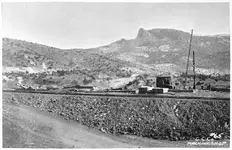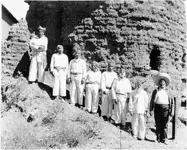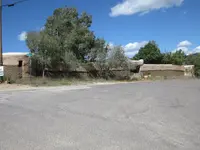Where does that put the alleged Arizona Jesuit caches then? You've stated numerous times that the expulsion caught the Jesuits flat-footed in Arizona, leading to a situation where documentation of their caches' locations was not accomplished and the caches became lost. Now it sounds more like you're speculating that the loot may have been removed to the Sea of Cortez, then to the Philippines prior to 1767. Makes sense logistically, but it takes the wind out of the "lost Jesuit cache" legends.
You must have been reading history books and not my posts if you read that the Arizona Expulsions caught the Jesuits flat footed. HAHAHA The only thing that MIGHT have caught them off guard were the expulsions from French Lands (it didn't involve any political intrigues). I have ALWAYS said the Jesuits had to have known what was coming. Maybe not exactly when, but the writing was certainly on the wall for anyone smart enough to see it (and the Jesuits were/are plenty smart).
For those not keeping up, here is what I believed happened:
The Jesuit Order had been amassing great wealth. They got it legally, through tithes, deals, slave trading, and wills of dying Wealthy Spaniards. They also obtained it illegally through mining and businesses for profit. The wealth they obtained legally, they used in their different Missions, Churches, Rectorates, Colegios, and Cabaceras. The wealth they obtained illegally, they secreted off to Rome to the East and Manila to the West. They operated in the most Northerly and remote regions so as to hide their mule trains of wealth. That is why IMHO Padre Kino built a 60 foot ship at Caborca to service the Baja Missions (before he found that Baja was a peninsula and not an island). A small Mission at the Northern end of the Sea of Cortez named San Ysidro is only on two maps. It is right next to a Tinaja (water source). Tinajas are not named. I believe Kino's Ship would haul wealth to San Ysidro, then go on South carrying supplies to Loreto. From San Ysidro, a mule train would carry the wealth to the Pacific Coast of Baja to await a Manila Galleon. Once Baja's status as a peninsula was established, Missions along the current US/Mexico Border were established as weigh stations for those mule trains. From those Missions on to the Pacific Missions to the same Manila Galleons.
The Jesuit Order operated in the same manner all over the world. They involved themselves in political intrigues, and sought to dethrone Kings that weren't (in their opinions) true Catholics (i.e. Gunpowder Plot, King John of Portugal, and Charles III of Spain). After all the Asian Expulsions, and when they were expelled from Portuguese Lands in 1759, I think they began slowly moving all their wealth. After France expelled them from her lands, they had to step things up. I think 1765 is when things started moving for them. I believe they thought they had more time than it turned out they actually did. Palafox and Pombal had been bending King Charles III's ear and badmouthing the Jesuits for many years. When Jesuits were arrested in Spain giving money to people to continue the Esquillace Riots in 1766, everything came to a screeching halt. That was the point when Charles started paying attention to those people that had been telling him the Jesuits were trying to dethrone him. With all of their contacts in Royal Circles, I am fairly certain they knew when Charles sent emissaries to closely watch the Jesuits in 1766. Once the surveillance started, they had to act as if all their correspondences were being monitored, and they had no way to secretly send anything to Rome. All the mule trains of wealth also had to cease for fear of being found out. I think this was the point where they realized they couldn't ship anything anywhere. They were forced to hide anything that hadn't already been shipped overseas. I believe the Father Visitador of each Rectorate was responsible for hiding the wealth of that Rectorate. They had approximately one year to hide everything (from mid-1766 until September 25th 1767). During the night of September 25-26, 1767, they were all rounded up and arrested (except for Father Och SJ who was sick, and the Baja Missions which took a while longer). The Padres were force marched across Mexico and trans-shipped in slave-ship like conditions back to Europe. I think the death toll was somewhere around 20-30%. I believe many of the Padres that held the secrets of the locations of much wealth died in transit and took those secrets with them.
MIke








 )
)